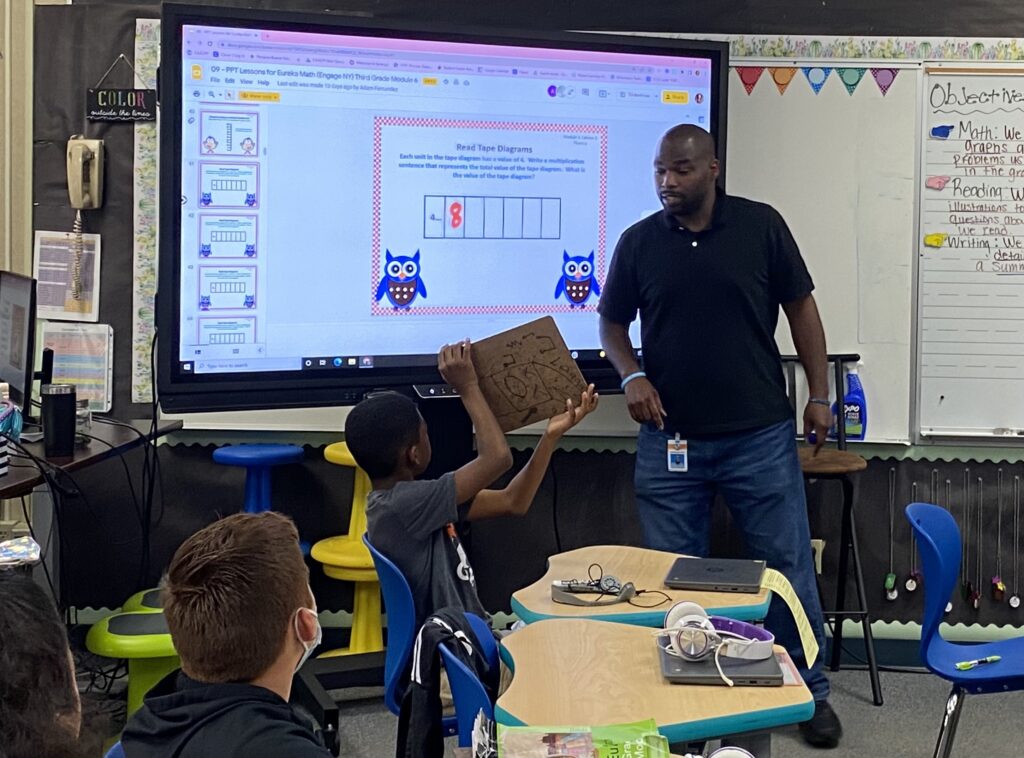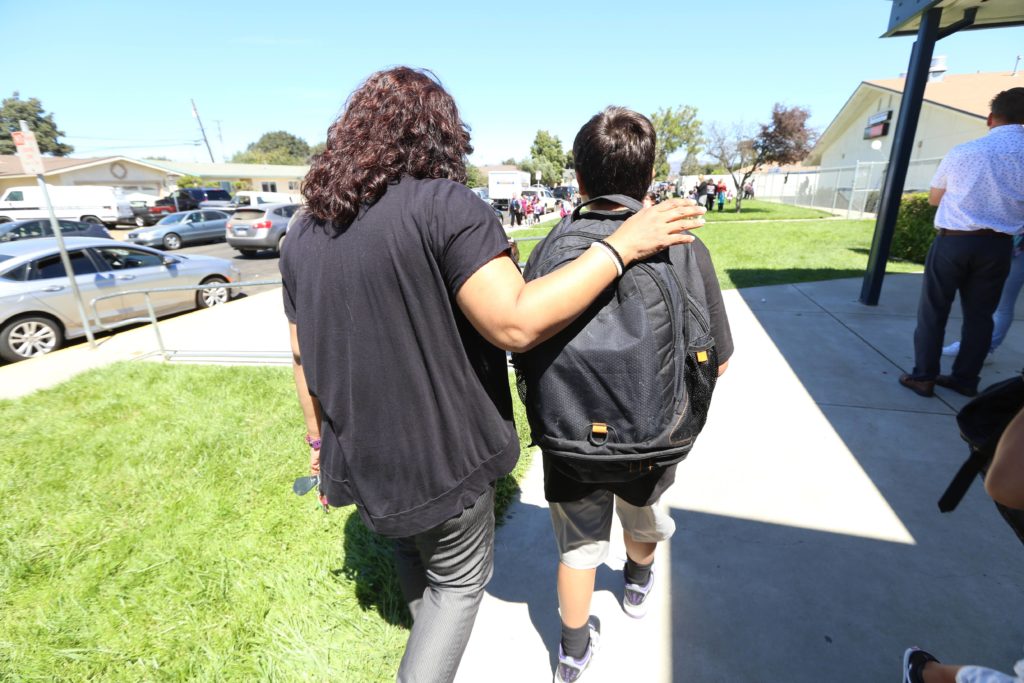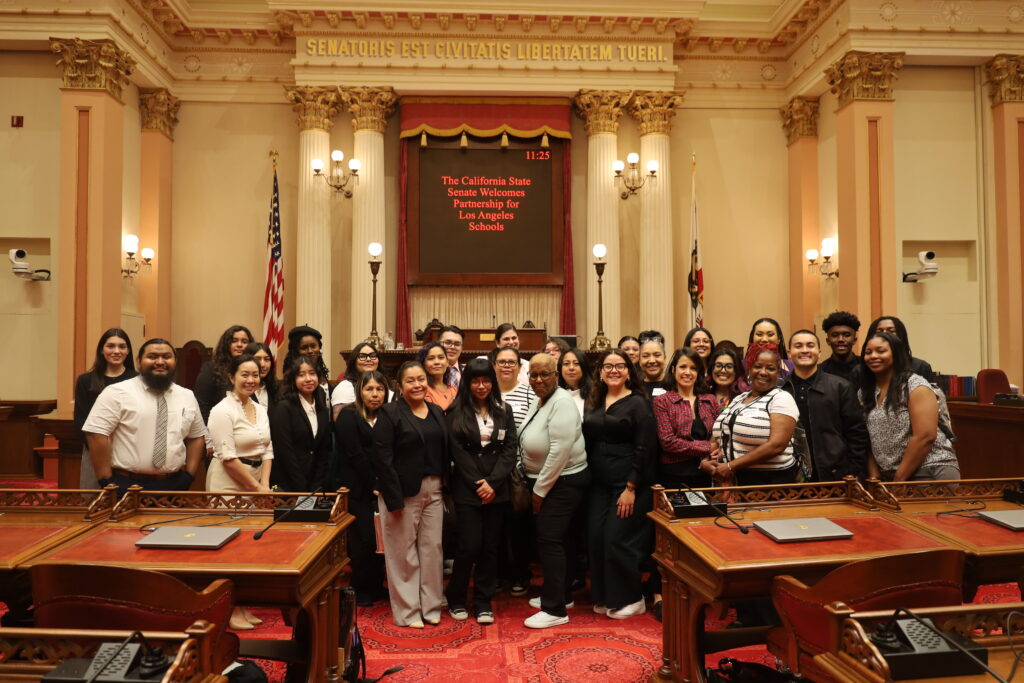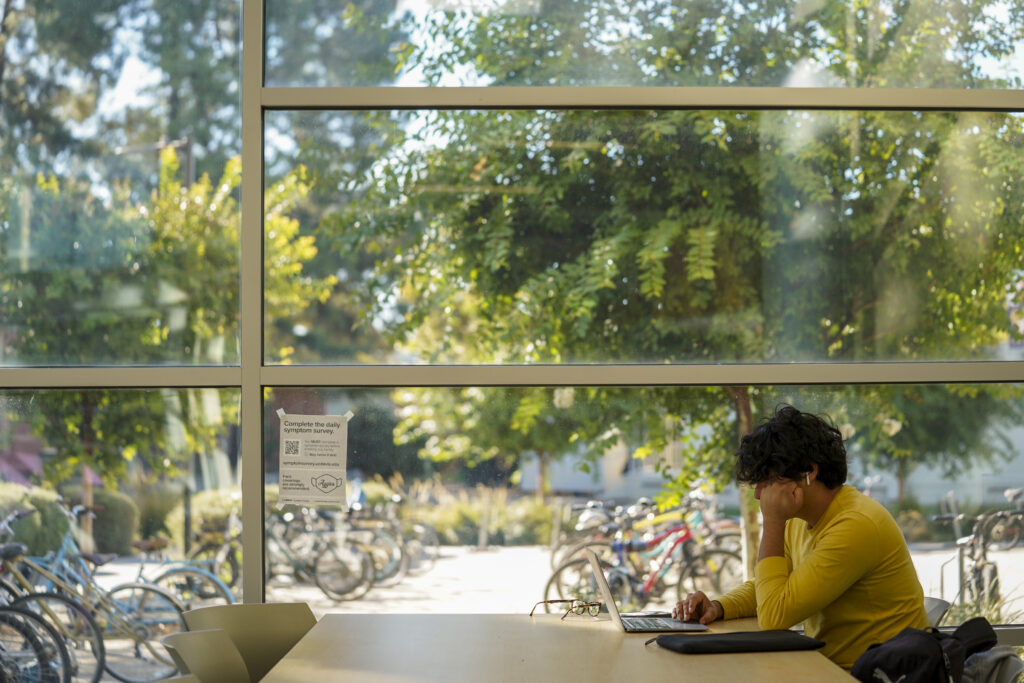
Marcus Epps, a resident in the Black Educator Teacher Residency, teaches a math lesson to a third grade class at Castle Elementary School in Bakersfield.
Credit: Emma Gallegos / EdSource
California needs to do much better for Black students, and the efforts to do so as of late are few, far between and watered down.
For years, our state has been looked to as a leader on education equity and pointed to as a model for other states on equitable funding and other programs. Yet from its inception, the Local Control Funding Formula has left out Black students, the student group denied the most support and resources from schools. And despite years of “equity” being an increasingly heard buzzword in Sacramento, we are still seeing alarmingly low progress on academic outcomes.
Now, in the wake of increasing hostility around acknowledging the legacy of slavery and its continued impact on Black people in America, the recent rollback of affirmative action, and an all-out assault against teaching the truth in classrooms around the country, California leaders need to be as bold with their actions as they are with their rhetoric.
Take, for instance, the current state of California’s ethnic studies course requirement. Ethnic studies help broaden awareness of the experiences of Black people, ensuring Black students see themselves reflected in the curriculum, and improve Black students’ academic achievement. In 2021, state leaders approved the course as a requirement that all graduating high school seniors must complete by 2030.
While the California Department of Education has taken some initial steps to support implementing this new requirement, there is much more to do to make universal ethnic studies a reality — as Gov. Gavin Newsom recently pointed out in a letter to districts. Implementing ethnic studies now requires a concerted effort from state and district leaders. First, district leaders must prioritize developing locally adapted curriculum, adopting high-quality instructional materials, and ensuring teachers have high-quality professional development opportunities.
Districts should also consider innovative ways to fully incorporate and align ethnic studies with other offerings, like dual enrollment, so that students can take college-level ethnic studies courses and simultaneously fulfill the high school graduation requirement while earning college credits. Districts should also be communicating with students and their families to ensure they are aware of the new requirement and upcoming opportunities to take the course.
Lastly, these and other implementation needs come with costs that the state has not yet fully addressed. Legislators should provide targeted financial resources in the state’s next budget cycle to guarantee ethnic studies implementation is fully funded and on track.
Effectively implementing ethnic studies is not a panacea that will eradicate racism from California schools. But it is a tangible step, one that is all the more important in the wake of an increasingly aggressive backlash against addressing the hundreds of years of oppression experienced by Black people in America. In fact, numerous California district leaders are welcoming this backlash through their own discriminatory actions, with multiple school boards around the state restricting teachers from discussing race in their classrooms. To be frank, this is not just a Florida problem.
We seem to shy away from a more honest conversation in our own state, at times almost dismissing racist occurrences as outliers and pointing fingers at other states from a supposed mantle of progressivism and anti-racism. But for the Black students in Anaheim who were threatened with images of guns and racial slurs from fellow students, for the Black students in Dixon who were posted about online, labeled as monkeys by a fellow student, these occurrences are not outliers, they are part of what living in California means to them. Our commitment to valuing diversity must include not just denouncing these incidents, but taking tangible, proactive actions to prevent them while uplifting Black students.
California can truly be at the forefront of the national movement to definitively reject the white nationalism that is increasingly creeping into the mainstream — but only if we prioritize tangible action as much as compelling rhetoric. We should be the state that leads the way in not just passing legislation, but in developing and implementing policies and practices that center serving Black students and other marginalized students, knowing that ultimately all students will do better if we prioritize the students currently at the margins.
From funding decisions and ethnic studies implementation to the policy changes suggested by the California Reparations Task Force, the state has a myriad of tangible strategies to pull from that are completely legal even in the face of the recent Supreme Court decision on affirmative action — and now is the time to double down on such strategies. After all, as goes California, so goes the nation.
•••
Natalie Wheatfall-Lum is director of TK-12 education policy at The Education Trust–West, a statewide research, policy and advocacy organization focusing on educational justice and closing achievement and opportunity gaps for underserved students, especially students from lower-income communities.
The opinions expressed in this commentary represent those of the author. EdSource welcomes commentaries representing diverse points of view. If you would like to submit a commentary, please review our guidelines and contact us.













